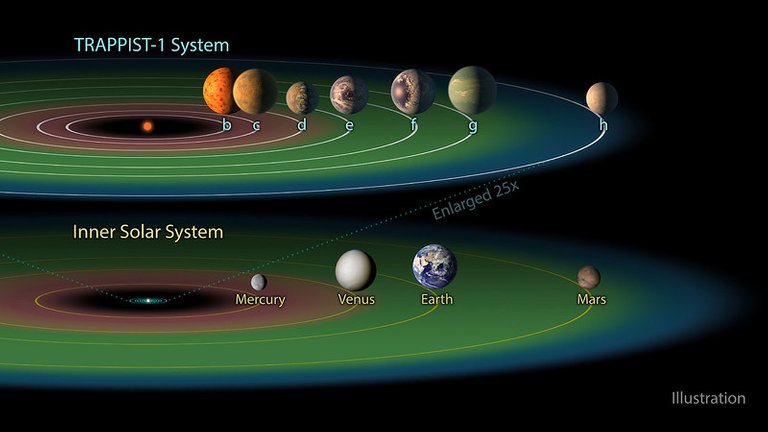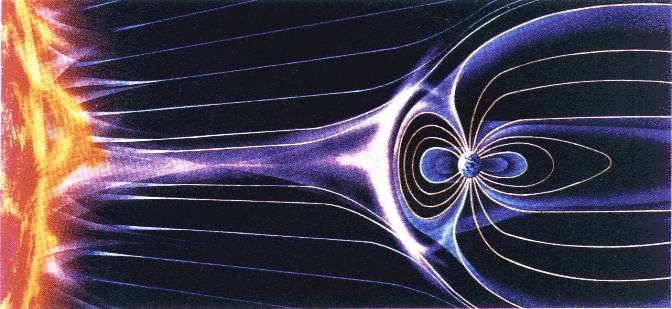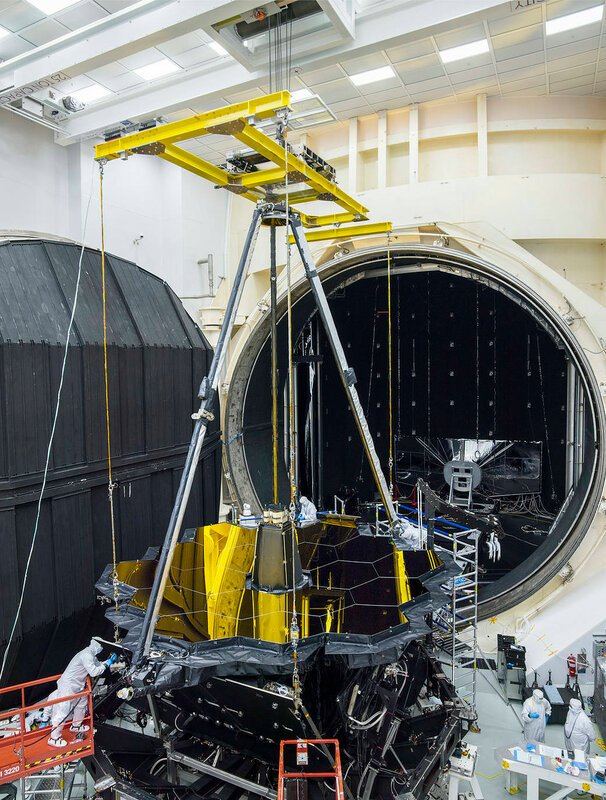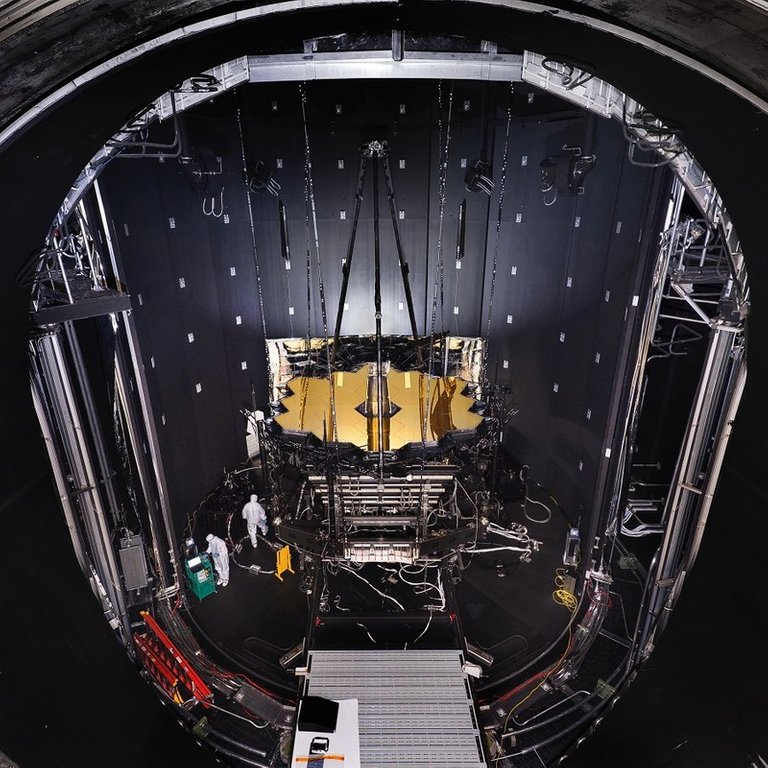Discovery of star system TRAPPIST-1 with 7 Earth-sized planets, 3 of which are located in habitable zone, caused a burst of opimism about search of life beyond Earth. However, because of its compact size, the conditions around TRAPPIST-1 star might be quite unlike in the space surrounding Earth, Mars and Venus.

Image: NASA/JPL-Caltech
Two separate teams of scientists at the Harvard-Smithsonian Center for Astrophysics (CfA) in Cambridge, Mass., suggest the behavior of the star in the TRAPPIST-1 system makes it much less likely than generally thought, that planets there could support life.
The first team considered many factors that could affect conditions on the surfaces of planets orbiting red dwarfs:
The concept of a habitable zone is based on planets being in orbits where liquid water could exist. This is only one factor, however, in determining whether a planet is hospitable for life.
As all red dwarfs, TRAPPIST-1 is rapidly spinning and generates powerful flares of ultraviolet radiation.
Manasvi Lingam and Avi Loeb found that planets in the TRAPPIST-1 system would be barraged by UV radiation with an intensity far greater than experienced by Earth. In the study they estimate that the chance of complex life existing on any of the three TRAPPIST-1 planets in the habitable zone is less than 1% of that for life existing on Earth.
In a separate study, another research team from the CfA and the University of Massachusetts in Lowell found that the star in TRAPPIST-1 poses another threat to life on planets surrounding it. Like the Sun, the red dwarf in TRAPPIST-1 is sending a stream of particles outwards into space. However, the pressure applied by the wind from TRAPPIST-1's star on its planets is 1,000 to 100,000 times greater than what the solar wind exerts on the Earth.

Image: ccmc.gsfc.nasa.gov
If the planets have no magnetosphere then there is no possibility for life (Earth-like life at least). Intensive solar wind will blow off all atmosphere as it happened with Mars. Even in case of powerful magnetosphere able to withstand strong solar winds, there is another effect. The planets of TRAPPIST-1 are located too close to the star so their magnetosphere could touch one other. The authors argue that the star's magnetic field will connect to the magnetic fields of any planets in orbit around it, opening direct channel and allowing particles from the star's wind to directly flow onto the planet's atmosphere. If this flow of particles is strong enough, it could strip the planet's atmosphere and perhaps evaporate it entirely.
Cecilia Garraffo of the CfA, who led the second team said:
The Earth's magnetic field acts like a shield against the potentially damaging effects of the solar wind. If Earth were much closer to the Sun and subjected to the onslaught of particles like the TRAPPIST-1 star delivers, our planetary shield would fail pretty quickly.
The both studies do not make any definite conclusion that the TRAPPIST-1 system or others (including our nearest neighbor Proxima Centauri) with red dwarf stars are devoid of life.
Jeremy Drake, also from CfA, says:
We're definitely not saying people should give up searching for life around red dwarf stars. But our work and the work of our colleagues shows we should also target as many stars as possible that are more like the Sun.
Meanwhile, James Webb Space Telescope - the mission that will answer many questions about exoplanets, started the last crucial series of tests before launch. It was sealed in enormous vacuum camera left from Apollo era for the next 100 days. If all goes well it will then go to California and after installation of the sun shield finally will start for Guiane spaceport for launch in October 2018.

Image: NASA/Chris Gunn

Image: NASA/Chris Gunn
Sources:
[2] The Threatening Environment of the TRAPPIST-1 Planets, arXiv:1706.04617 [astro-ph.SR
Great and informative post
Thanks for sharing
Good luck=))
Thanks for the support! Keep it up with space ;)
This post received a 2.5% upvote from @randowhale thanks to @busser! For more information, click here!
Thanks!